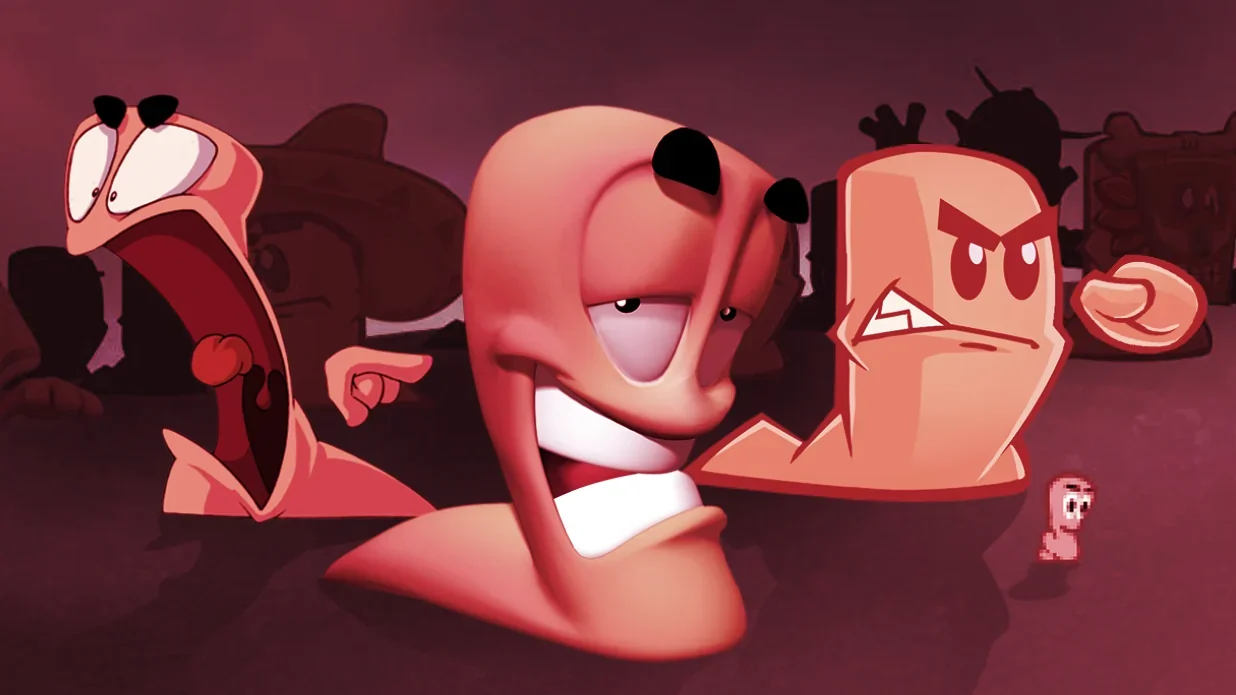Collectible ‘Worms’ are buried following backlash as franchise fans and game developers complain about NFT plans.
It’s a familiar refrain lately: a video game firm announces NFT plans and then backlash ensues. And in some cases, the company cancels its plans and issues a mea culpa. That happened again this week with publisher Team17 and its plans for NFTs based on the Worms video game franchise, which have now been canned.
This afternoon, the indie game publisher confirmed on Twitter that it was changing course after facing significant social media criticism following yesterday’s NFT announcement.
“Team17 is today announcing an end to the MetaWorms NFT project,” the studio tweeted. “We have listened to our Teamsters, development partners, and our games’ communities, and the concerns they’ve expressed, and have therefore taken the decision to step back from the NFT space.”
The British publisher planned to release NFT collectibles inspired by the 26-year-old Worms franchise, which has sold 75 million games over the years. Team17 partnered with Reality Gaming Group to release the collectibles on that company’s Ethereum sidechain, called the Digital Asset Trading (DAT) platform.
However, in addition to pushback from fans and prominent members of the video game community, Team17 also faced resistance from its partners. Aggro Crab, a studio that had its 2020 game Going Under released by Team17, said that it would no longer work with the long-running publisher if the NFT plans weren’t canceled.
“We believe NFTs cannot be environmentally friendly, or useful, and really are just an overall fucking grift,” read Aggro Crab’s statement, in part. “Needless to say, we will not be working with them on further titles, and encourage other indie developers to do the same unless this decision is reversed.
Other developers that have worked with Team17 in recent years, such as SMG Studio and Playtonic Games, likewise posted messages in opposition to NFT projects.
Bracing for backlash
While Ethereum-based games like Axie Infinity and The Sandbox have generated significant attention along with billions of dollars collectively in NFT trading volume, traditional video game companies have faced ample resistance from fans when entering the NFT space.
An NFT acts like a deed of ownership to a digital item, and while it can represent things like digital artwork and profile pictures, it can also point to a one-of-a-kind video game item—like a character, a unique weapon, or a customizable plot of land. The overall NFT market soared in 2021, generating $23 billion worth of trading volume, per DappRadar.
NFT technology enables the ability for players to fully own, resell, and potentially profit from items that they purchase, and it may even be possible to use NFT items from one game or metaverse world in another. But early examples of the technology in and around the video game space have largely been met with vocal pushback.
Why are traditional video game fans so resistant to NFT technology? Some cite the environmental impact of blockchain networks like Ethereum and Bitcoin—although many networks, including Solana and Tezos, do not use nearly as much energy.
Others see it as a grift, in the words of Aggro Crab, or a way for game publishers to extract more money from players. Free-to-play games and downloadable content (DLC) both received similar pushback from gamers before becoming industry standards.
Ubisoft was the first major game publisher to implement in-game NFT items via the Tezos blockchain, as announced in December, and it too encountered vocal criticism—but decided to continue with its plans. The Ubisoft Quartz NFT platform launched with Tom Clancy’s Ghost Recon Breakpoint and could be extended to other Ubisoft games.
Major publishers Square Enix and Konami also faced a negative reception when announcing their respective NFT plans. Meanwhile, GSC Game World canceled plans to implement NFTs into its upcoming game, S.T.A.L.K.E.R. 2: Heart of Chernobyl, and gaming-centric chat app Discord scuttled plans to add crypto wallet connectivity following backlash.
Read full story on Decrypt


